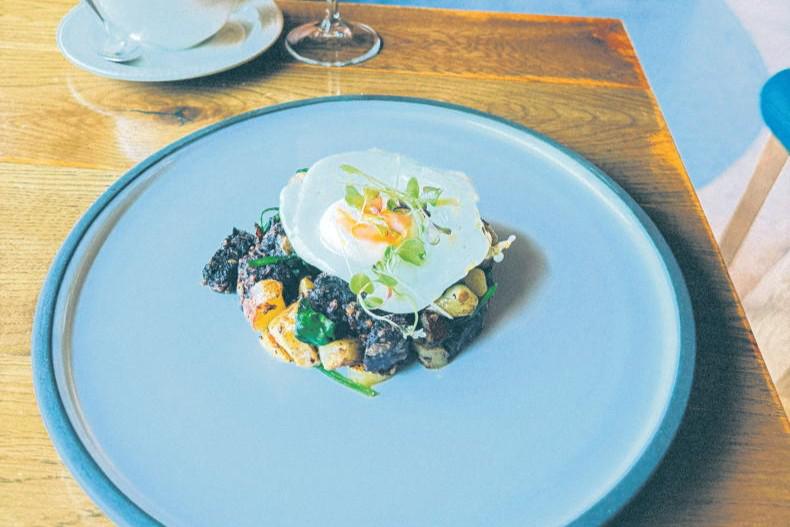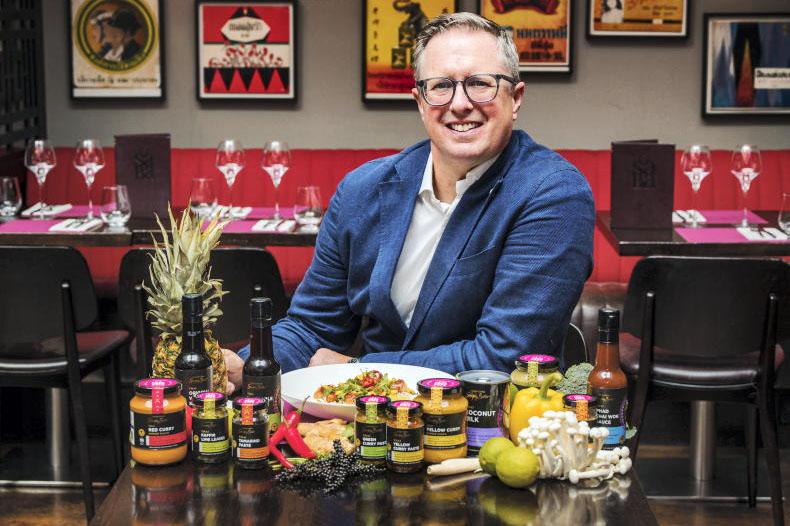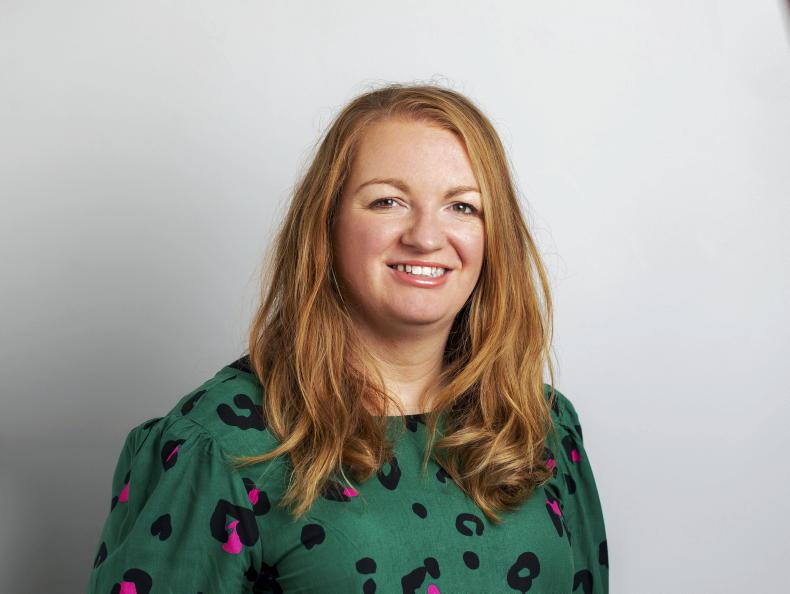‘If you knew what it takes to grow a carrot you’d never cut the top or bottom off and throw it in the bin.’ So said Darina Allen at the recent Food on the Edge, an annual food symposium.
Her words made me stop and think. I grow carrots so I know what it takes to grow them. From preparing the bed, sowing the fine seed, thinning the baby carrots, keeping the bed weed and the roots free of carrot fly, to pulling them to eat takes between three to four months. I don’t peel them, but just wash and eat, either raw or lightly steamed, so I didn’t think I wasted carrots or their nutrients. However, I have been throwing the green tops into the compost bin.
Carrot tops
While they are not entirely wasted as they will break down into compost to use to feed the soil, I could have been eating them. Now that I have tasted carrot top pesto I can assure you there’ll be no more carrot greens in my compost.
The carrot tops are just a tiny example of food waste. Globally a quarter of all food produced is wasted. I find that really shocking. Imagine coming home from grocery shopping and when you’ve put all the bags on the counter, you took a quarter of all the food and put it in the bin. What did that food cost you? What did it cost to grow, to pick and pack, to ship it and get it on the shelves?
The carrot tops are just a tiny example of food waste. Globally a quarter of all food produced is wasted.
Of course there’s also the huge moral issue of throwing away food while an estimated 828 million people across the world go to bed hungry. I know food waste isn’t the only reason people go hungry, but it is a big part of the problem.
Food waste
I include myself when I say we all waste food. Most of us have found the half block of cheese in the back of the fridge covered in blue mould or sniffed the leftover chicken and thought it’s not worth risking, and throwing it in the bin or in my case, out to the cats. We buy the bag of oriental greens, use a few leaves for the recipe and a week later we toss the bag of slimy leaves in the bin (hopefully the compost bin).
My mother, who grew up during World War II, was great at making meals that used up whatever was in the fridge or pantry. We used to regularly have, what we jokingly called mashed muck, as it was a mix of everything and yet you couldn’t quite tell what was in it.
She hated food waste and if I had her over for Sunday dinner she’d give me a list of possible meals I could make with the leftover chicken, including making stock with the carcass.
Food waste in the kitchen is only part of the problem. How much food never gets on the shelves because it doesn’t look perfect? I don’t care how my fruit or veg from the garden looks, but I’ve also been conditioned to see rows and rows of perfect apples in the shops.
Buying from a local grower or farmer’s market does give us the opportunity to buy the wonky carrot that wouldn’t make it to the shelves but this is not an option for everyone.
At the same symposium I met Giselle Makinde who set up Cream of the Crop to produce products such as ice cream from food that producers or distributors would put in the bin. Using bananas as an example, she explained how most people buy underripe bananas so they last longer as they ripen. This leads to tons and tons of ripe bananas being dumped. Not only does she turn them into ice cream, she is now looking at making flour from the banana skins.
English author and environmental campaigner, Tristram Stuart once said: “Cutting food waste is a delicious way of saving money, helping to feed the world and protect the planet.”
Read more
Margaret Leahy: 'To plant a garden is to believe in tomorrow'
Margaret Leahy: ageism exists in every facet of society
‘If you knew what it takes to grow a carrot you’d never cut the top or bottom off and throw it in the bin.’ So said Darina Allen at the recent Food on the Edge, an annual food symposium.
Her words made me stop and think. I grow carrots so I know what it takes to grow them. From preparing the bed, sowing the fine seed, thinning the baby carrots, keeping the bed weed and the roots free of carrot fly, to pulling them to eat takes between three to four months. I don’t peel them, but just wash and eat, either raw or lightly steamed, so I didn’t think I wasted carrots or their nutrients. However, I have been throwing the green tops into the compost bin.
Carrot tops
While they are not entirely wasted as they will break down into compost to use to feed the soil, I could have been eating them. Now that I have tasted carrot top pesto I can assure you there’ll be no more carrot greens in my compost.
The carrot tops are just a tiny example of food waste. Globally a quarter of all food produced is wasted. I find that really shocking. Imagine coming home from grocery shopping and when you’ve put all the bags on the counter, you took a quarter of all the food and put it in the bin. What did that food cost you? What did it cost to grow, to pick and pack, to ship it and get it on the shelves?
The carrot tops are just a tiny example of food waste. Globally a quarter of all food produced is wasted.
Of course there’s also the huge moral issue of throwing away food while an estimated 828 million people across the world go to bed hungry. I know food waste isn’t the only reason people go hungry, but it is a big part of the problem.
Food waste
I include myself when I say we all waste food. Most of us have found the half block of cheese in the back of the fridge covered in blue mould or sniffed the leftover chicken and thought it’s not worth risking, and throwing it in the bin or in my case, out to the cats. We buy the bag of oriental greens, use a few leaves for the recipe and a week later we toss the bag of slimy leaves in the bin (hopefully the compost bin).
My mother, who grew up during World War II, was great at making meals that used up whatever was in the fridge or pantry. We used to regularly have, what we jokingly called mashed muck, as it was a mix of everything and yet you couldn’t quite tell what was in it.
She hated food waste and if I had her over for Sunday dinner she’d give me a list of possible meals I could make with the leftover chicken, including making stock with the carcass.
Food waste in the kitchen is only part of the problem. How much food never gets on the shelves because it doesn’t look perfect? I don’t care how my fruit or veg from the garden looks, but I’ve also been conditioned to see rows and rows of perfect apples in the shops.
Buying from a local grower or farmer’s market does give us the opportunity to buy the wonky carrot that wouldn’t make it to the shelves but this is not an option for everyone.
At the same symposium I met Giselle Makinde who set up Cream of the Crop to produce products such as ice cream from food that producers or distributors would put in the bin. Using bananas as an example, she explained how most people buy underripe bananas so they last longer as they ripen. This leads to tons and tons of ripe bananas being dumped. Not only does she turn them into ice cream, she is now looking at making flour from the banana skins.
English author and environmental campaigner, Tristram Stuart once said: “Cutting food waste is a delicious way of saving money, helping to feed the world and protect the planet.”
Read more
Margaret Leahy: 'To plant a garden is to believe in tomorrow'
Margaret Leahy: ageism exists in every facet of society









SHARING OPTIONS